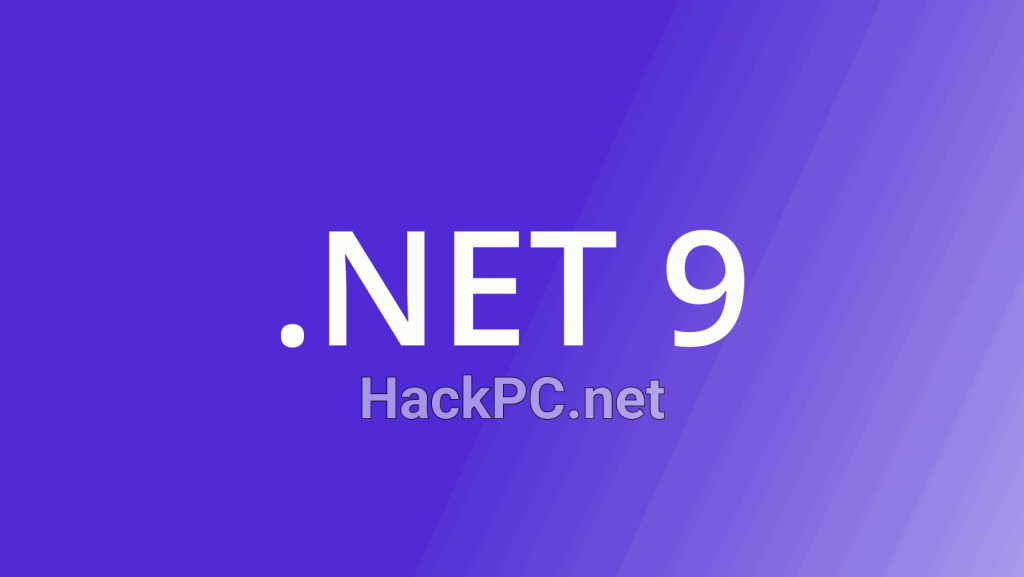
Microsoft’s September 2025 servicing releases for .NET 9.0.9 and .NET Framework deliver critical non-security improvements that directly impact application performance, reliability, and developer productivity. These cumulative updates represent months of refinement, bug fixes, and optimization efforts that make the .NET ecosystem more robust for production workloads.
Understanding the Latest .NET 9.0.9 Release
The .NET 9.0.9 update alongside SDK 9.0.305 introduces significant quality-of-life improvements for developers working with cloud-native applications, microservices architectures, and high-throughput systems. This standard-term support release continues Microsoft’s commitment to providing regular maintenance updates that enhance runtime stability without introducing breaking changes.
The update process for .NET 9 servicing releases follows an upgrade pattern rather than a side-by-side installation approach. When developers install the latest patch, it automatically replaces previous 9.0.x versions, ensuring consistency across development environments and reducing potential version conflicts in production deployments.
Performance Optimization Enhancements in .NET Runtime
The .NET 9 runtime improvements focus heavily on dynamic Profile Guided Optimization (PGO), which now delivers approximately 15% faster startup times for applications. This enhancement particularly benefits serverless functions, containerized microservices, and applications with frequent cold starts. The JIT compiler’s ability to analyze actual execution patterns and generate optimized machine code based on real-world usage creates measurable performance gains without requiring code modifications.
Memory management receives substantial attention in this release. The garbage collector now exhibits 8-12% reduced memory overhead for applications with high allocation rates. This translates to smoother garbage collection cycles, decreased latency spikes, and more predictable performance characteristics for memory-intensive workloads. Developers working with data processing pipelines, real-time analytics, or high-frequency trading systems will notice improved throughput and reduced tail latencies.
Loop optimization represents another critical area of enhancement. The compiler now performs more aggressive induction-variable widening on x64 architectures, resulting in fewer instructions within hot loops. Combined with improved vectorization capabilities through AVX10.1 support and experimental ARM SVE instructions, compute-intensive algorithms execute significantly faster on modern hardware.
.NET Framework September 2025 Quality Rollup Details
The September 2025 .NET Framework updates address several long-standing issues across Windows 10, Windows 11, and Windows Server environments. These cumulative updates target .NET Framework 3.5, 4.8, and 4.8.1 installations, ensuring legacy applications continue receiving critical reliability improvements.
A notable fix addresses ASP.NET error event logging failures in the Windows Event log. This resolution impacts enterprise applications relying on centralized logging infrastructure for monitoring and diagnostics. Development teams maintaining legacy web applications will find improved observability and easier troubleshooting capabilities after applying these updates.
The GB18030 certificate update for Chinese language support ensures compliance with evolving international standards. This change affects applications processing Chinese text, particularly those dealing with government systems or financial institutions requiring GB18030-2022 compliance. The update maintains backward compatibility while enabling proper handling of newly standardized character encodings.

JSON Serialization and LINQ Performance Gains
System.Text.Json serialization performance increases by approximately 35% in the latest runtime updates, dramatically improving API response times and data processing workflows. The implementation now includes optimized paths for common serialization scenarios, reduced allocations during object graph traversal, and improved handling of nullable reference type annotations. REST API developers will notice reduced CPU utilization and memory pressure during high-volume request processing.
LINQ operations, particularly Where and Select clauses, benefit from enhanced method devirtualization and improved inlining heuristics. The runtime now generates more efficient code for common LINQ patterns, resulting in fewer virtual method calls and reduced overhead for collection operations. These optimizations compound when working with large datasets or complex query compositions.
Kestrel Web Server and HTTP/3 Improvements
The Kestrel web server processes HTTP/2 and HTTP/3 requests up to 20% faster with 25% reduced average latency. Connection pooling mechanisms now utilize opportunistic lockless synchronization, reducing contention in high-concurrency scenarios. SSL/TLS handshake operations allocate fewer objects, improving connection establishment times and reducing memory churn during traffic spikes.
These enhancements particularly benefit microservices communicating over encrypted channels, API gateways handling thousands of concurrent connections, and real-time communication systems utilizing WebSockets or Server-Sent Events. The improved connection management reduces resource consumption, allowing applications to scale more efficiently under load.
Native AOT Compilation Advancements
Native Ahead-of-Time compilation delivers 30-40% reduced memory footprint for compiled applications, with substantially faster cold-start times. Thread-local static access in Native AOT-compiled programs now inlines directly, eliminating runtime calls previously required for thread-local storage access. This optimization particularly benefits multithreaded applications with frequent thread-local state access.
Cloud-native applications deployed as Native AOT binaries experience improved container startup times, reduced image sizes, and lower memory consumption in serverless environments. The enhanced trimming capabilities remove unused code more aggressively while maintaining application correctness through improved analysis of reflection patterns and dynamic code generation scenarios.
Developer Productivity Features and Tooling Updates
Visual Studio 17.12 integration requirements ensure developers access the full suite of .NET 9 features, including enhanced IntelliSense support, improved debugging experiences, and integrated performance profiling tools. The .NET SDK introduces workload sets, allowing teams to maintain consistent tool versions across development environments until explicitly updated.
The terminal logger, now enabled by default, provides clearer build output with summarized failure and warning counts. MSBuild script analyzers help identify common configuration issues before deployment, while improved parallel test execution reduces continuous integration pipeline duration. These quality-of-life improvements compound to create a more efficient development workflow.
Migration Considerations and Compatibility
Applications migrating from .NET 8 to .NET 9 generally experience seamless transitions, though developers should review breaking changes documentation for edge cases. The runtime maintains strong backward compatibility, with most breaking changes categorized as binary incompatible rather than source incompatible, meaning recompilation typically resolves any issues.
Control-flow enforcement technology (CET) enablement by default on Windows provides hardware-enforced stack protection against return-oriented programming exploits. While this security enhancement operates transparently for most applications, performance-sensitive code may require profiling to ensure CET overhead remains negligible. Developers can opt-out through configuration if necessary, though the security benefits generally outweigh minimal performance impacts.
Practical Implementation Strategies
Development teams should approach .NET 9.0.9 adoption through staged rollouts, beginning with non-critical services to validate performance improvements and compatibility. Automated testing suites should execute against the new runtime to identify any behavioral differences, particularly for applications utilizing reflection, dynamic code generation, or platform-specific APIs.
Performance baselines established before migration enable quantitative measurement of improvements. Metrics to monitor include application startup time, request latency percentiles, memory consumption patterns, and CPU utilization under load. These measurements validate expected gains and identify optimization opportunities specific to application workloads.
For .NET Framework updates, enterprises should leverage Windows Update infrastructure or Microsoft Update Catalog for controlled deployments. Testing legacy applications against updated frameworks ensures continued compatibility while benefiting from reliability improvements. The cumulative nature of these updates means organizations can skip intermediate releases if desired, though regular patching remains recommended for optimal stability.

Performance Monitoring and Optimization Techniques
Leveraging the enhanced performance capabilities requires understanding application bottlenecks through profiling and monitoring. The improved diagnostic APIs in .NET 9 provide deeper insights into garbage collection behavior, JIT compilation statistics, and thread pool utilization. Development teams should integrate these metrics into application performance monitoring solutions to track improvements over time.
Memory allocation patterns deserve particular attention given the garbage collector improvements. Applications previously experiencing generation 2 collection pressure may now maintain working sets in younger generations, reducing pause times and improving throughput. Profiling tools help identify allocation hot spots where targeted optimizations yield maximum benefit.
Future-Proofing Applications
The trajectory of .NET development emphasizes cloud-native architectures, AI integration capabilities, and cross-platform consistency. Applications designed with these principles benefit most from runtime improvements. Adopting modern patterns like minimal APIs, source generators, and Native AOT compilation positions codebases to leverage future optimizations automatically.
Investment in comprehensive test coverage ensures confidence when adopting new runtime versions. Automated performance regression testing catches unexpected degradations early, while feature flag systems enable gradual rollout of runtime-dependent optimizations. This defensive approach maximizes benefits while minimizing deployment risks.
Conclusion
The .NET 9.0.9 and .NET Framework September 2025 updates represent significant milestones in platform evolution, delivering tangible performance improvements and reliability enhancements without requiring code changes. Development teams benefit from faster applications, reduced infrastructure costs, and improved developer productivity through thoughtful runtime optimizations and tooling improvements.
Organizations should prioritize these updates to maintain security compliance, access performance improvements, and ensure compatibility with evolving ecosystem requirements. The non-security fixes address real-world pain points identified through community feedback and telemetry analysis, making these releases essential for production deployments.
Regular servicing updates demonstrate Microsoft’s commitment to platform stability and continuous improvement. By maintaining current patch levels, development teams ensure applications operate efficiently, securely, and reliably across diverse deployment environments. The cumulative nature of these improvements compounds over time, making consistent update practices crucial for long-term application health.



Comments (0)